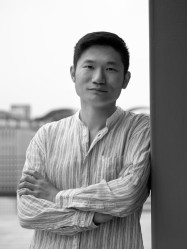Recording: https://disk.pku.edu.cn:443/link/ECECDE7A00BF43BF844D2C0D0FA302EB
Valid Until: 2027-03-31 23:59
Abstract: The congruence of modular forms is an important phenomenon in the arithmetic study of modular forms, or more generally, automorphic forms. For classical modular forms, many results have been obtained by Serre, Ribet, et al, for more than thirty years. In particular, Ribet used the arithmetic geometry of modular curves to find such congruence relation, also known as level raising. We recall as follows: Fix a prime l; consider a weight-2 level-N newform f satisfying the mod l level-raising condition at a prime p coprime to Nl. Ribet proved that the first Galois cohomology of the mod l Galois representation of Q_p associated with f can be realized as the Abel-Jacobi image of the supersingular locus of the level-N modular curve over F_p.
In ongoing joint work with Yichao Tian (MCM) and Liang Xiao (PKU), we generalize this phenomenon to higher-dimensional unitary Shimura varieties at inert places (which remains a conjecture in general), and its relation with a certain Ihara type lemma for such varieties. In the talk, I will explain cases for which we have confirmed such conjecture; and if time permits, we will mention its number-theoretical implications.
Bio: Yifeng Liu is a Professor at the Institute for Advanced Study in Mathematics, Zhejiang University. His primary areas of interest span algebraic geometry, automorphic representations, and number theory. He obtained his B.S. degree from Peking University in 2007 and PhD from Columbia University in 2012. He was a professor at Yale before joining Zhejiang University in 2021. Yifeng Liu received a Sloan Research Fellowship in 2017 and was awarded the SASTRA-Ramanujan Prize in 2018 for his contribution to number theory and arithmetic geometry.
